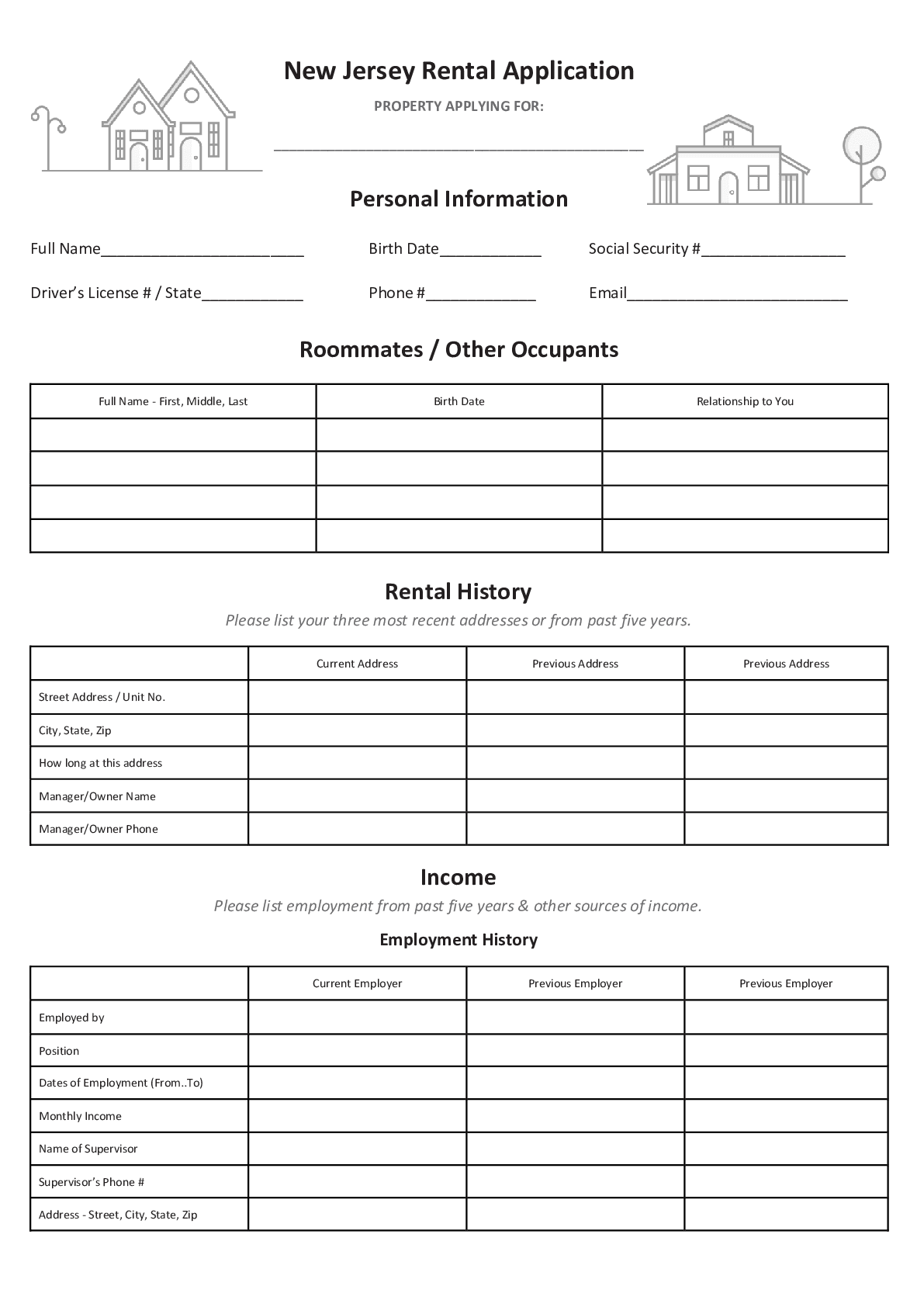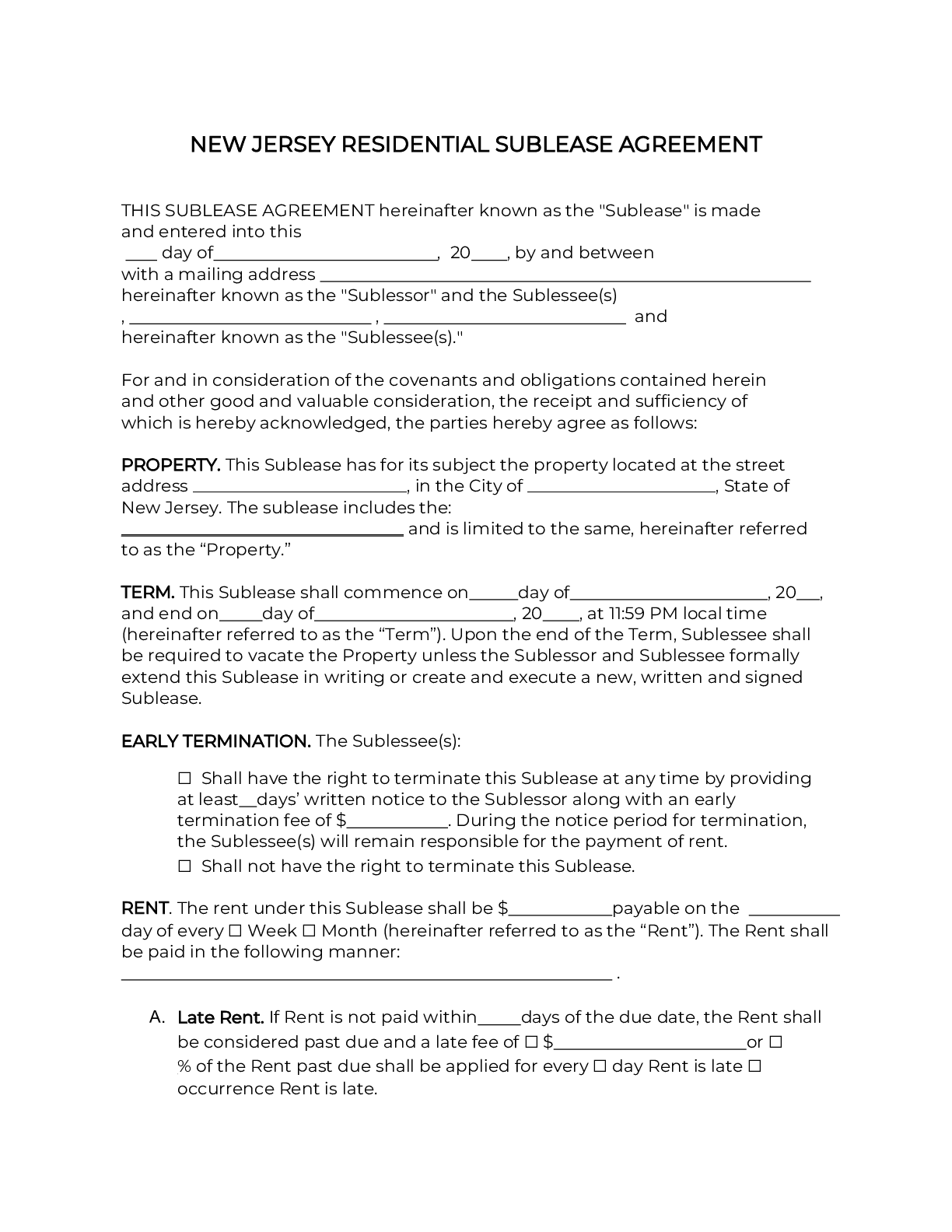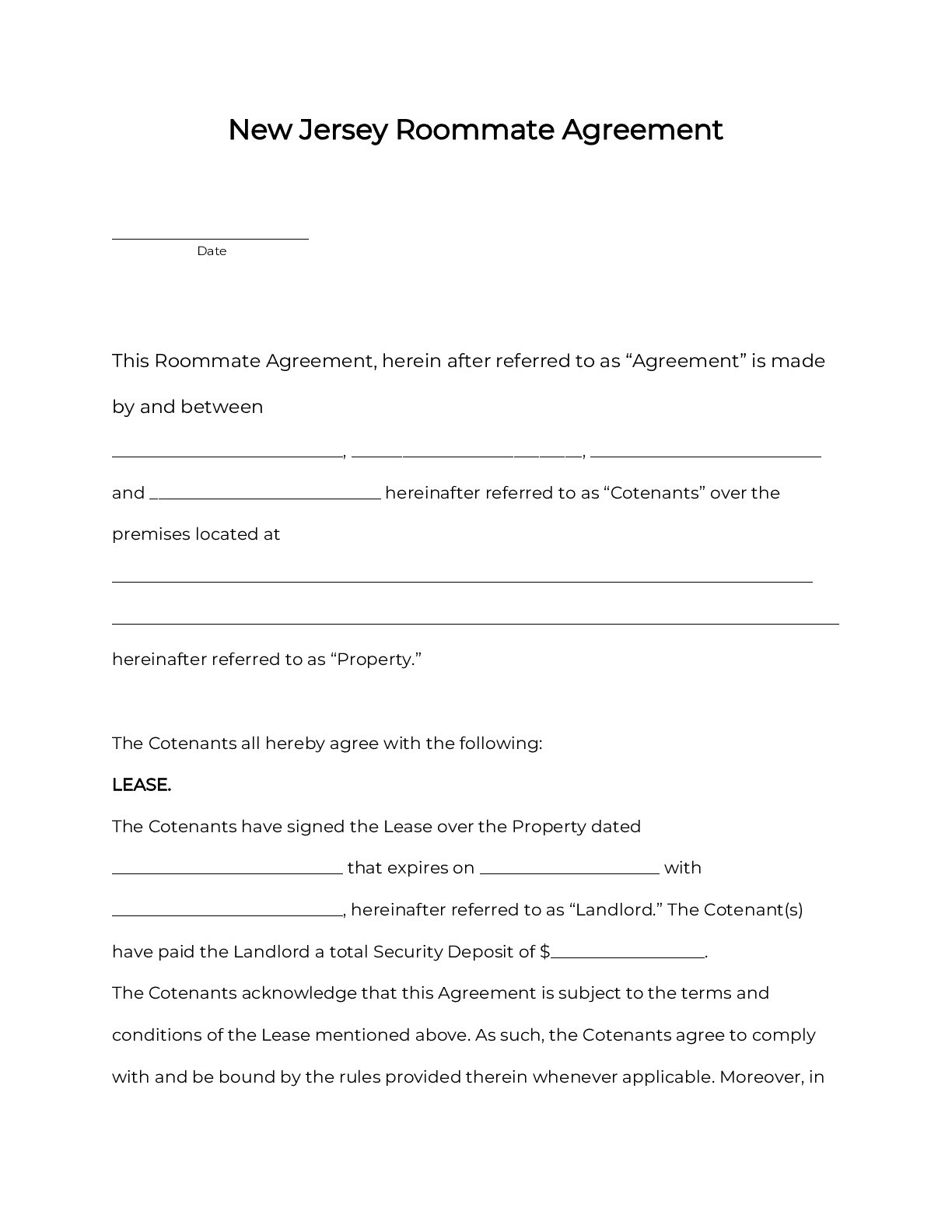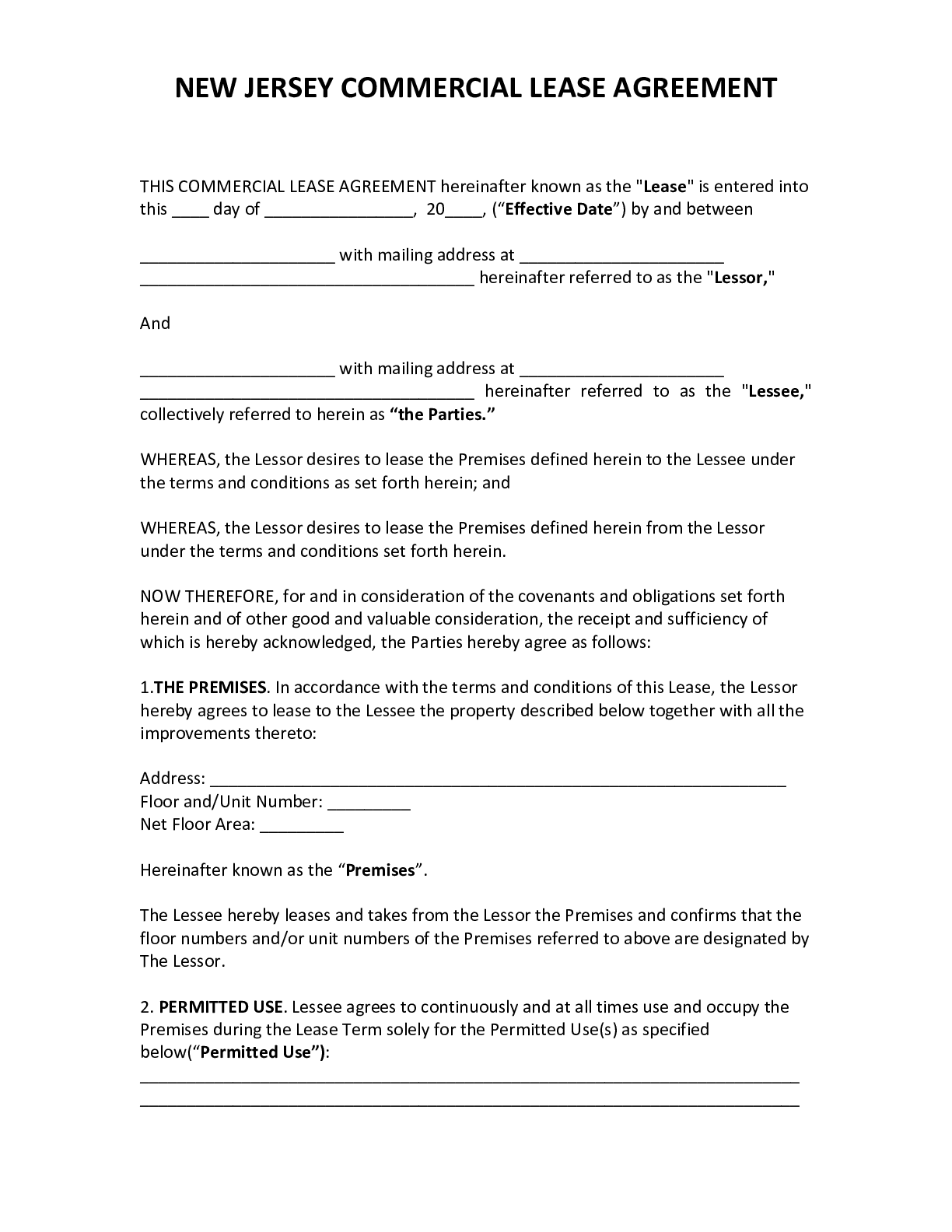

A New Jersey rental agreement is a legal contract between a landlord overseeing a rental property and a tenant who wishes to use it. New Jersey landlord-tenant law governs these agreements; rental terms must be within the limits allowed by law.

A New Jersey residential lease agreement (“rental agreement”) is a legal contract for a tenant to rent a residential property from a landlord, subject to terms and conditions agreed by all parties.

A New Jersey month-to-month lease agreement is a contract (not necessarily written) where a tenant rents property from a landlord. The full rental term is one month, renewable on a month-to-month basis.

New Jersey landlords may use a rental application form to screen prospective tenants. A rental application collects information relating to finances, rental history, and past evictions.

A New Jersey sublease agreement is a legal contract where a tenant ("sublessor") rents (“subleases”) property to a new tenant (“sublessee”), usually with the landlord’s permission.

A New Jersey roommate agreement is a legal contract between two or more people (“co-tenants”) who share a rental property according to rules they set, including for things like splitting the rent. This agreement binds the co-tenants living together, and doesn’t include the landlord.

A New Jersey commercial lease agreement is a legal contract arranging the rental of commercial space between a landlord and a business.
To learn more about required disclosures in New Jersey, click here.
To learn more about landlord tenant laws in New Jersey, click here.
The term “multiple dwelling” shall mean any building or structure of one or more stories and any land appurtenant thereto, and any portion thereof, in which three or more units of dwelling space are occupied, or are intended to be occupied by three or more persons who live independently of each other. This definition shall also mean any group of ten or more buildings on a single parcel of land or on contiguous parcels under common ownership, in each of which two units of dwelling space are occupied or intended to be occupied by two persons or households living independently of each other, and any land appurtenant thereto, and any portion thereof…
a. The following information shall be posted in at least one conspicuous area, where the information is most likely to be viewed by tenants, of a tenant-occupied multiple dwelling and on the Internet website of any management company that manages a tenant-occupied multiple dwelling:
(1) emergency contact instructions, and the name, address, and telephone number of an individual representative of the record owner or managing agent who may be reached or contacted at any time in the event of an emergency affecting the premises or any unit of dwelling space, in accordance with the landlord registration requirements set forth in subsection f. of section 2 of P.L. 1974, c.50 (C.46:8-28); and (2) instructions on how to access and use the comprehensive social services information toll-free telephone hotline, established pursuant to section 1 of P.L. 1991, c.542 (C.30:1-1.1). b. The following information shall be contained in a printed notice, conspicuously set forth in prominent boldface type, in every lease offered to a tenant in a multiple dwelling:
(1) the Internet website address of the management company that manages the multiple dwelling; and (2) instructions on how to access and use the comprehensive social services information toll-free telephone hotline, established pursuant to section 1 of P.L. 1991, c.542 (C.30:1-1.1). c. The information provided to tenants in accordance with subsections a. and b. of this section shall be made available in English and Spanish.
a. Every landlord shall notify each of the landlord’s tenants prior to lease signing or renewal, whether a property is located in the FEMA Special Flood Hazard Area (“100-year floodplain”) or Moderate Risk Flood Hazard Area (“500-year floodplain”) and if the landlord has actual knowledge that the rental premises or any portion of the parking areas of the real property containing the rental premises has been subjected to flooding. Seasonal rentals of less than 120 days shall be exempt from the requirements of this section. Each new tenant shall be provided the notices required pursuant to this section in writing and prior to the time that the lease of the rental unit is signed. If the lease is in writing, the notice required under this subsection may be included in the written lease or the written renewal lease, provided that, in the case of a residential lease, the notice is a separate rider, individually signed or otherwise acknowledged by the tenant, and written in not less than 12-point typeface.
c. Every residential lease shall also contain the following notice to tenants: “Flood insurance may be available to renters through FEMA’s National Flood Insurance Program to cover your personal property and contents in the event of a flood. A standard renter’s insurance policy does not typically cover flood damage. You are encouraged to examine your policy to determine whether you are covered.”